Abstract
The effects of chlorpromazine and reserpine on the noradrenaline and adrenaline contents of the frontal cortex, the hypothalamus, the hippocampus and the midbrain were studied in the dog. In control dogs, the catechol amine concentrations were highest in the hypothalamus and lowest in the frontal cortex and the hippocampus. Noradrenaline contents were about seven to nine times as high as those of adrenaline in all the areas. Small doses of chlorpromazine raised the catechol amines in all the areas, the rise being maximum with 5 mg/kg. With increase in the dose of chlorpromazine there was a gradual reversal of the effect and, with 25 mg/kg, there was diminution of noradrenaline content in all the areas except in the hypothalamus. In general, chlorpromazine produced a greater rise in adrenaline than it did of noradrenaline content, and the increase of both amines was very high in the midbrain and the hippocampus compared with the other areas. Reserpine, however, depleted the catechol amine contents of all areas. The depletion was greatest for noradrenaline, an effect quite marked in the midbrain and the frontal cortex. It was concluded that the actions of these two tranquillizers on the catechol amines of dog brain differed both as to site and mechanism.
Full text
PDF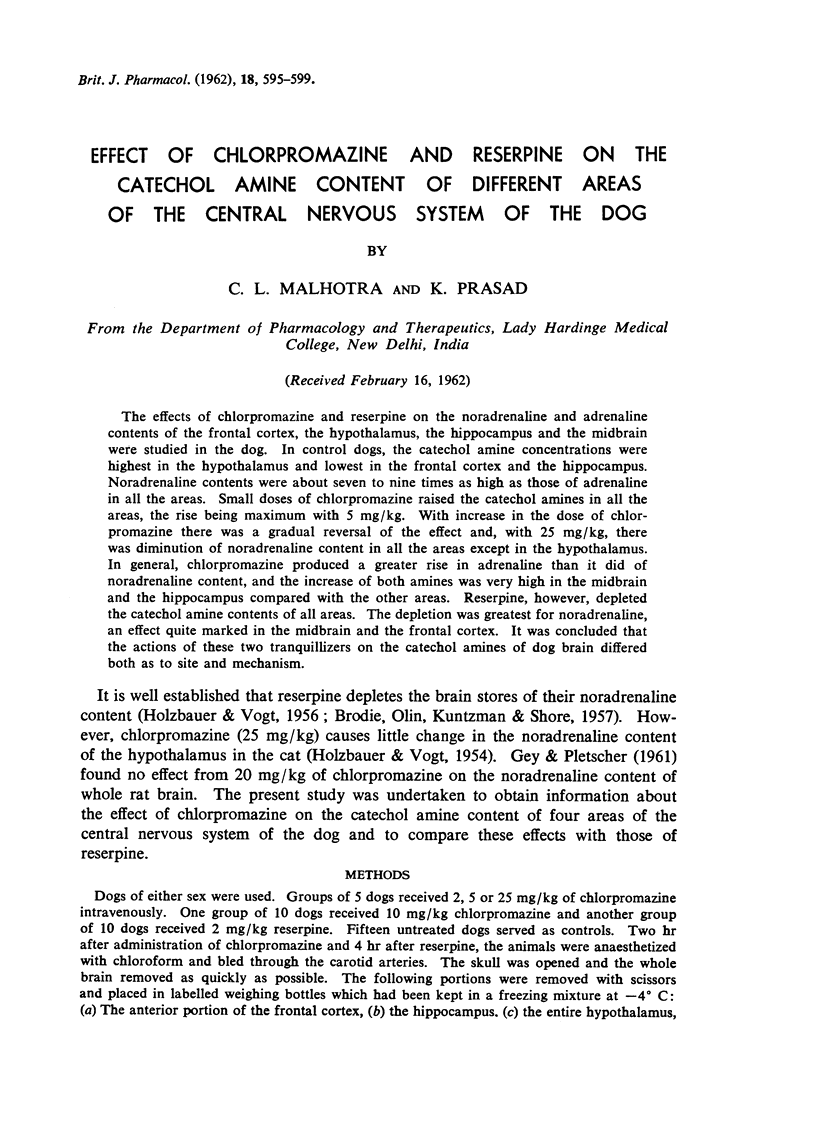
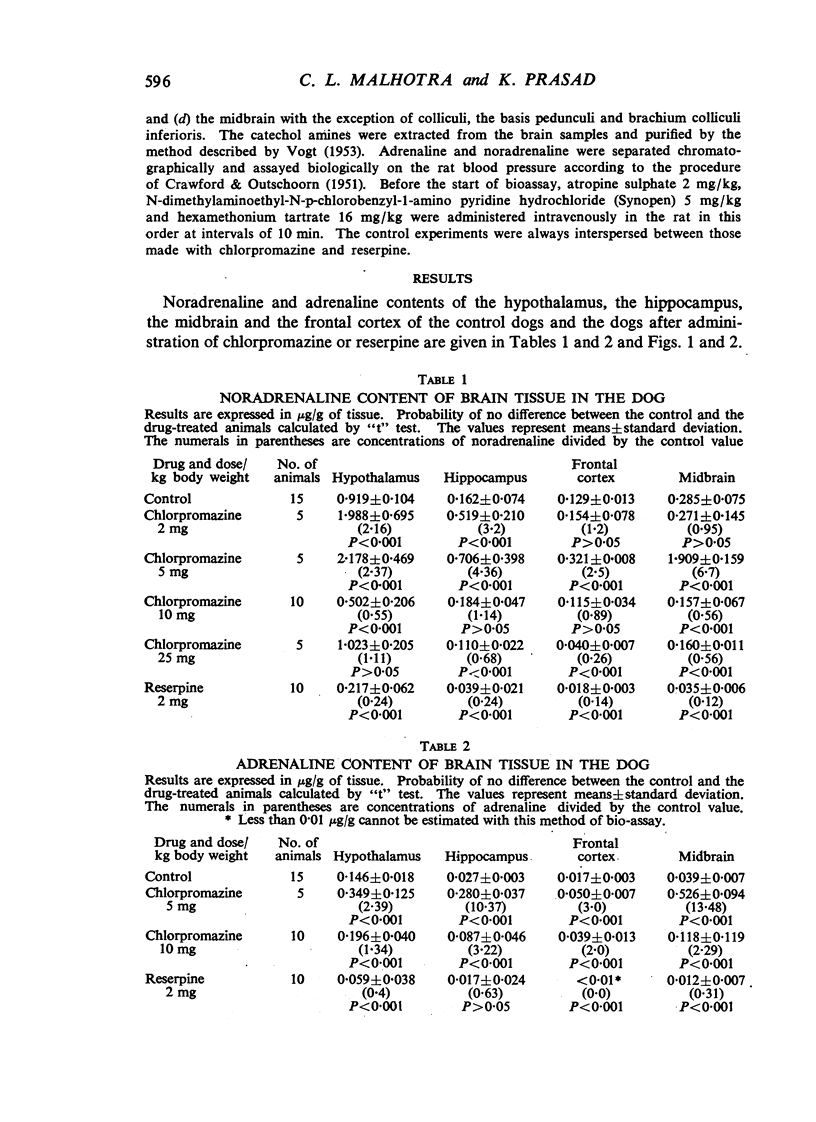
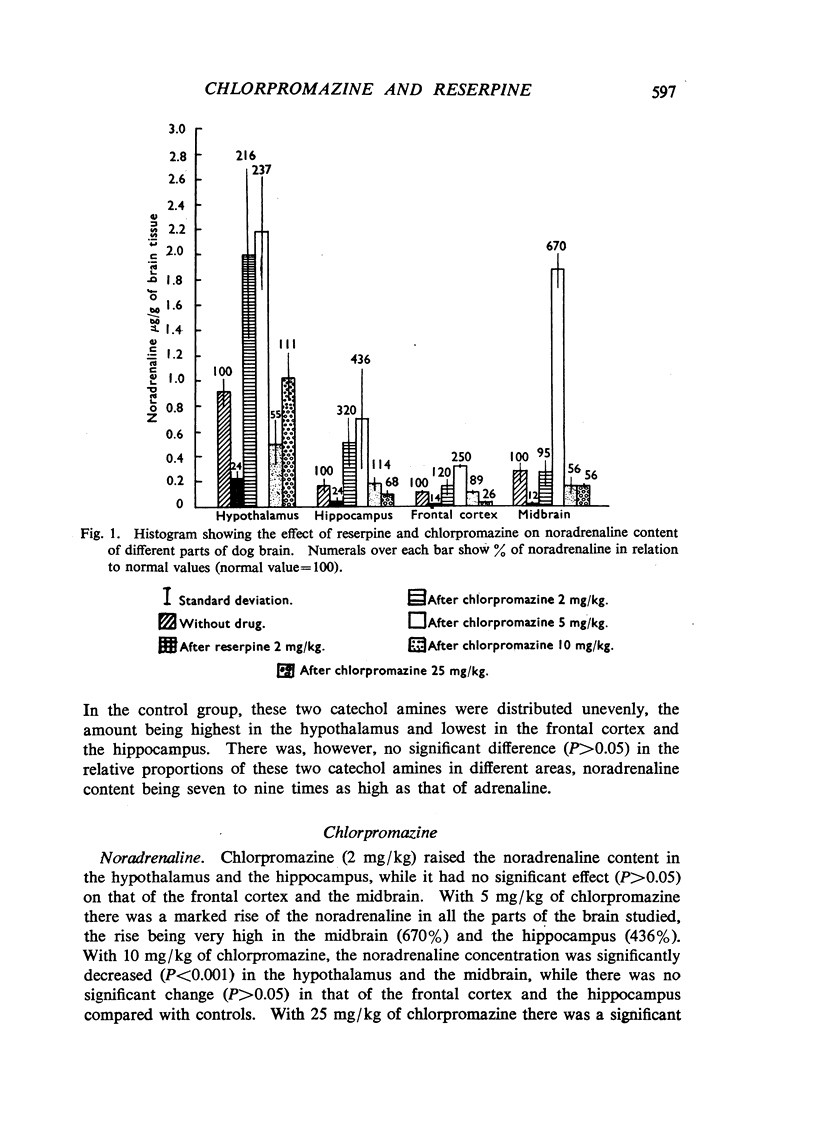
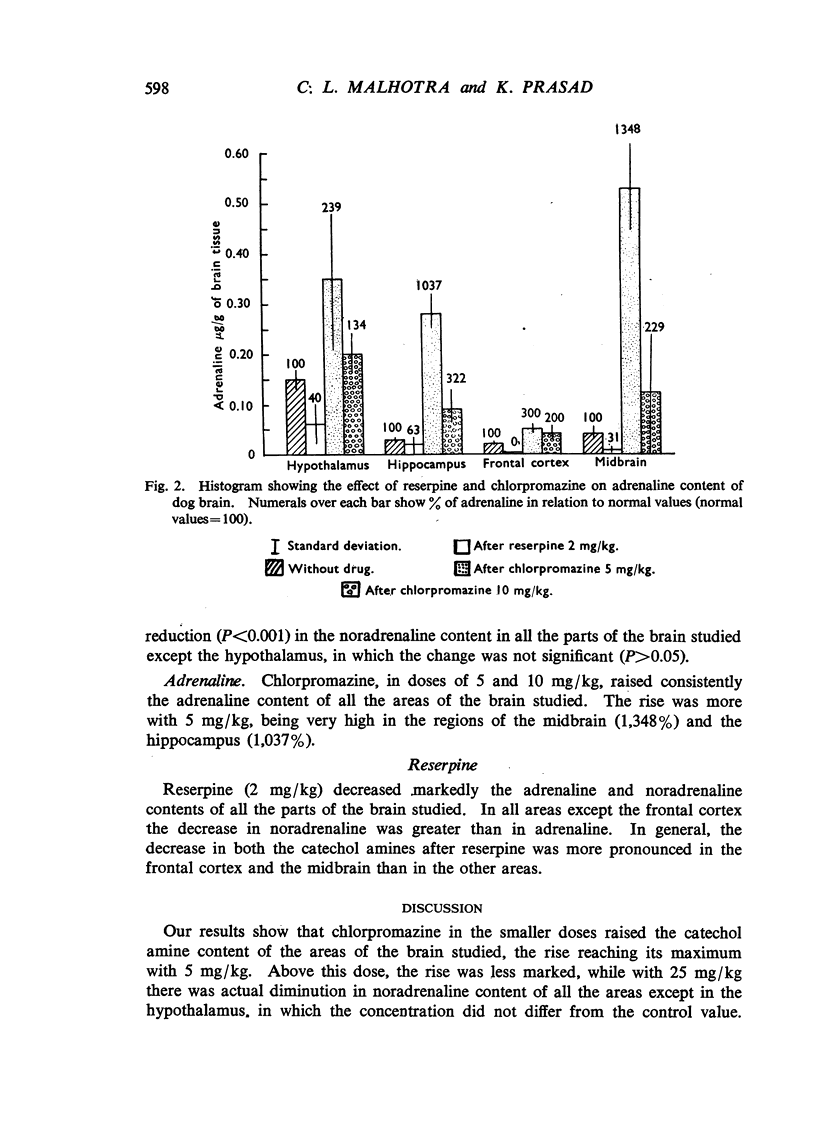
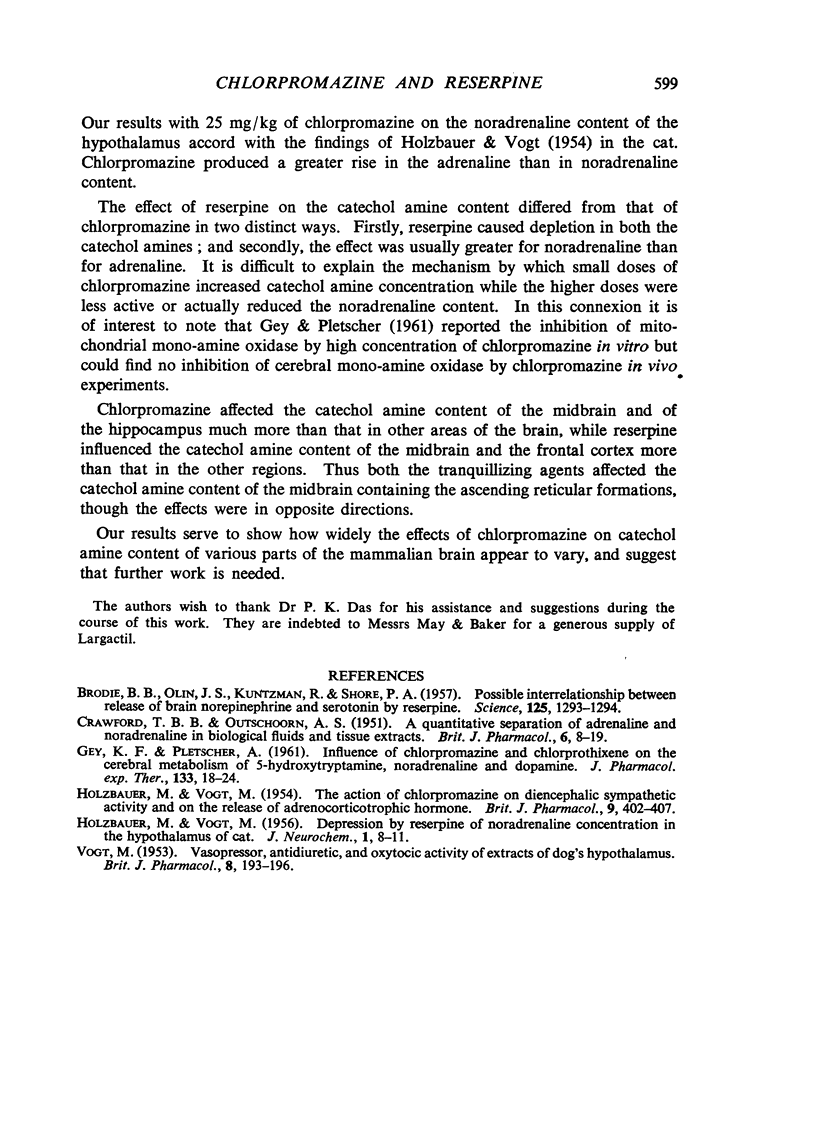
Selected References
These references are in PubMed. This may not be the complete list of references from this article.
- BRODIE B. B., OLIN J. S., KUNTZMAN R. G., SHORE P. A. Possible interrelationship between release of brain norepinephrine and serotonin by reserpine. Science. 1957 Jun 28;125(3261):1293–1294. doi: 10.1126/science.125.3261.1293. [DOI] [PubMed] [Google Scholar]
- CRAWFORD T. B. B., OUTSCHOORN A. S. The quantitative separation of adrenaline and noradrenaline in biological fluids and tissue extracts. Br J Pharmacol Chemother. 1951 Mar;6(1):8–19. doi: 10.1111/j.1476-5381.1951.tb00614.x. [DOI] [PMC free article] [PubMed] [Google Scholar]
- GEY K. F., PLETSCHER A. Influence of chlorpromazine and chlorprothixene on the cerebral metabolism of 5-hydroxytryptamine, norepinephrine and dopamine. J Pharmacol Exp Ther. 1961 Jul;133:18–24. [PubMed] [Google Scholar]
- HOLZBAUER M., VOGT M. Depression by reserpine of the noradrenaline concentration in the hypothalamus of the cat. J Neurochem. 1956 May;1(1):8–11. doi: 10.1111/j.1471-4159.1956.tb12048.x. [DOI] [PubMed] [Google Scholar]
- HOLZBAUER M., VOGT M. The action of chlorpromazine on diencephalic sympathetic activity and on the release of adrenocorticotrophic hormone. Br J Pharmacol Chemother. 1954 Dec;9(4):402–407. doi: 10.1111/j.1476-5381.1954.tb00852.x. [DOI] [PMC free article] [PubMed] [Google Scholar]
- VOGT M. Vasopressor, antidiuretic, and oxytocic activities of extracts of the dog's hypothalamus. Br J Pharmacol Chemother. 1953 Jun;8(2):193–196. doi: 10.1111/j.1476-5381.1953.tb00777.x. [DOI] [PMC free article] [PubMed] [Google Scholar]


